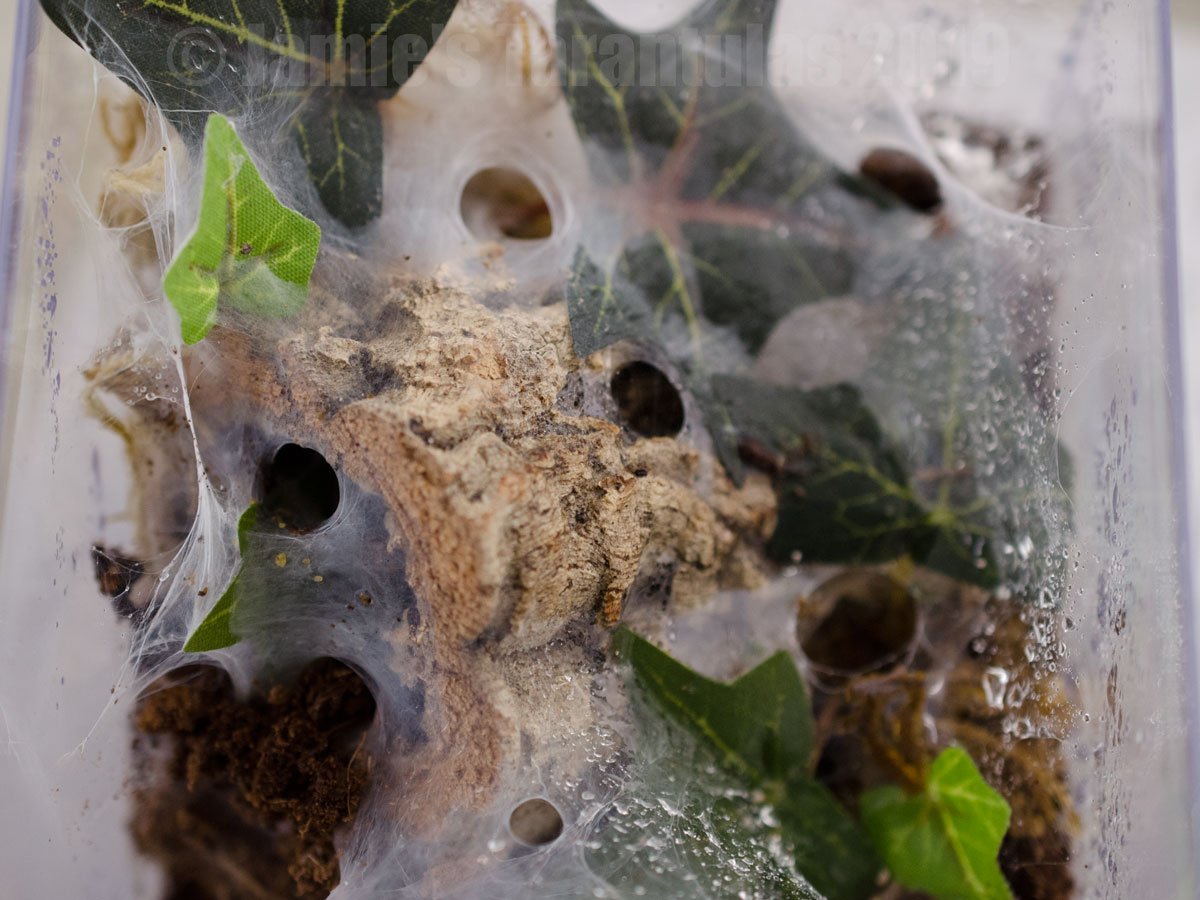What I’ve noticed right away trying to take photos for this blog is the slings are very skittish. If I am quit, enter the room without turning on the lights etc. I can usually catch many of them out of their burrows & going about their business…
…but as soon as go for the lights, camera, touch the enclosure etc. they retreat into the safety of their burrows so quickly it makes me chuckle. In a blink of an eye they almost look like a reef of anemones fleeing at the hint of danger.
I have to admit they are pretty darn cute! I am having a lot of fun with them however, getting good photos for the blog is easier said than done!
Four days after rehousing:
I put about 10-12 pinhead in the enclosure and lightly misted.
There is some webbing starting to accumulate around high-traffic areas such as the cork tube and the moss tunnel that runs along the outside of the bark.



One week after rehousing:
The amount of webbing this colony has laid over the past 3 days is pretty impressive. These little guys have been working hard on turning their new house into a home:



About ten days after rehousing:
There is even more webbing! A few colony members ate today.


Two weeks after rehousing:
More and more webbing


Three weeks after rehousing:


Why are some tarantulas communal? Most species you’ll just end up with one (very fat) spider!
That is a very good question!
I have noticed when feeding the community members can very easily tell the difference between a prey item and a colony member. If a sibling misses the initial attack the roach typically flees right into the fangs of another colony member. Almost like they planned it…
I have also seen colony members “fighting” over food. Think of two dogs playing tug-o-war you’ll get the idea. Usually the bigger one gets the snack, but sometimes the prey is ripped apart and the little one gets something, too.
Also, if a community member kills multiple roaches and can’t hold them all, a community member might come by and snatch up the unguarded snack.
We’d love to hear your thoughts and experiences!






Leave a Comment - Reply to